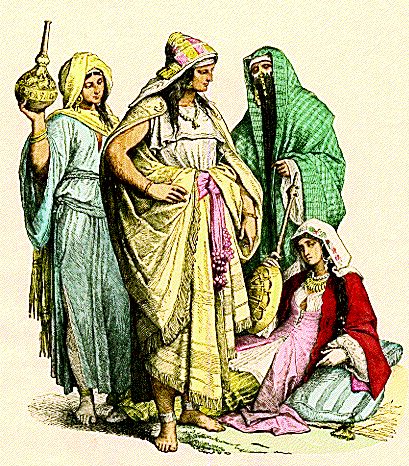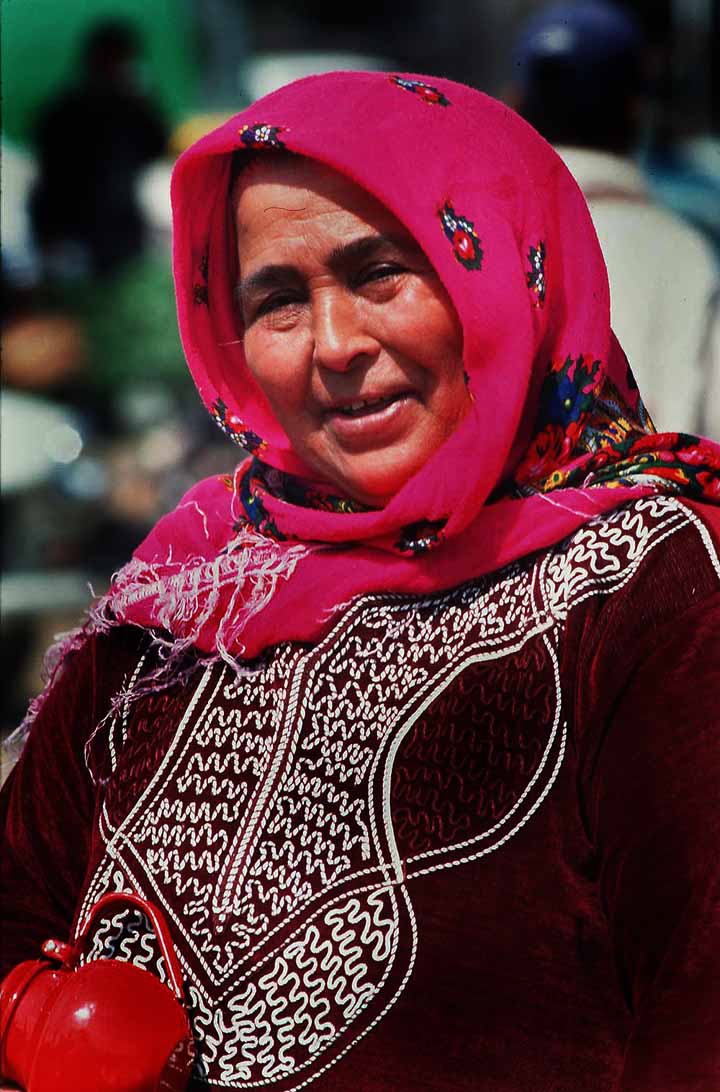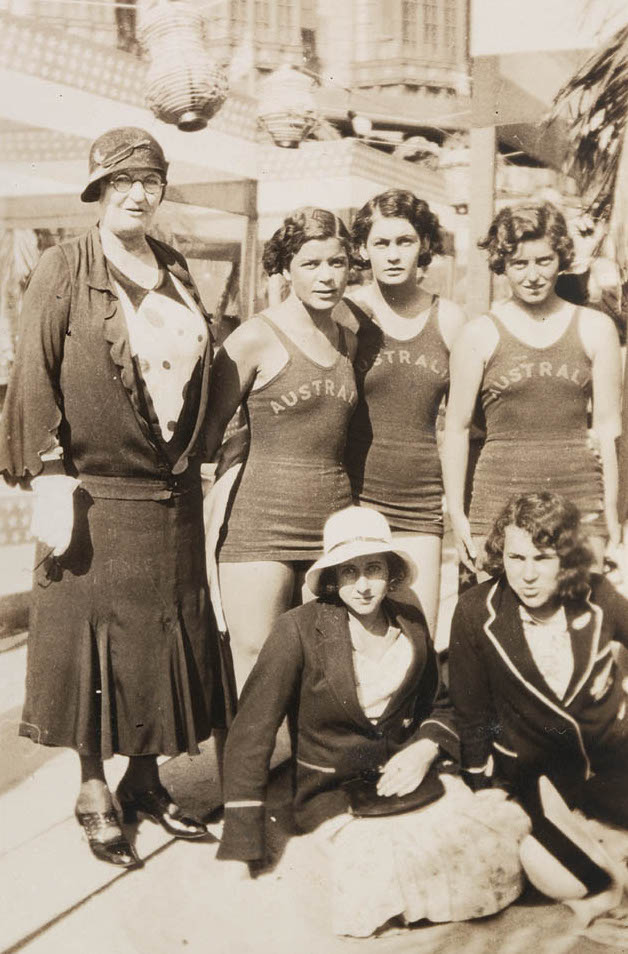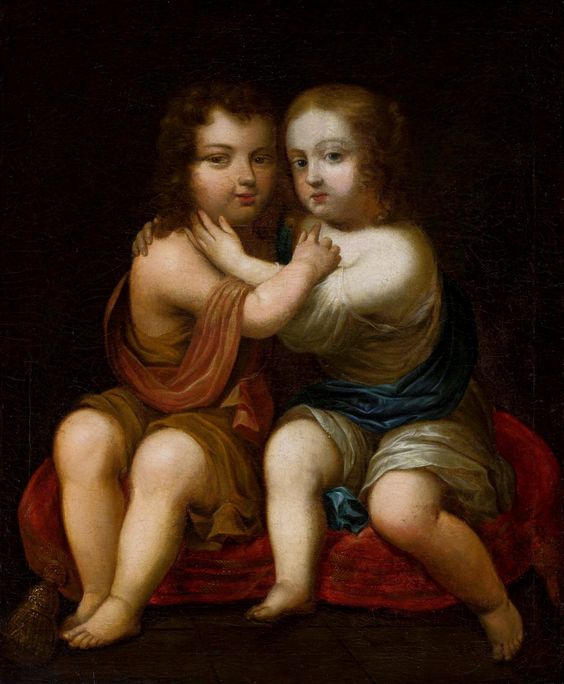|
Mahram
In Islam, a () is a family member with whom marriage would be considered permanently unlawful (''haram''). A woman does not need to wear hijab around her mahram or spouse, and an adult male mahram or husband may escort a woman on a journey, although an escort may not be obligatory. Overview People with whom marriage is prohibited * permanent or blood ''mahrams'' include: ** all direct ancestors ** all direct descendants ** siblings ** siblings of parents, grandparents, and further antecedents ** children and further descendants of siblings * in-law ''mahrams'' with whom one becomes ''mahram'' by marrying someone: ** all the ancestors of one's spouse ** all the descendants of one's spouse ** all who marry a direct ancestor ** all who marry a direct descendant (A woman may marry her stepfather, but only if the stepfather has not consummated his marriage to her mother.) * ''Rada'' or "milk-suckling ''mahrams''" with whom one becomes ''mahram'' because of being nursed by the s ... [...More Info...] [...Related Items...] OR: [Wikipedia] [Google] [Baidu] |
Islamic Sexual Jurisprudence
Sexuality in Islam contains a wide range of views and laws, which are largely predicated on the Quran, and the sayings attributed to Muhammad (''hadith'') and the rulings of religious leaders (''fatwa'') confining sexual intercourse to relationships between men and women. All instructions regarding sex in Islam are considered parts of, firstly, Taqwa or obedience and secondly, Iman or faithfulness to God. Islamic marital jurisprudence allows Muslim men to be married to multiple women (a practice known as polygyny). The Quran and the ''hadiths'' allow Muslim men to have sexual intercourse only with Muslim women in marriage (''nikāḥ'') and " what the right hand owns" (Arabic: ما ملكت أيمانکم). This historically permitted Muslim men to have extramarital sex with concubines and sex slaves. Contraceptive use is permitted for birth control. Acts of homosexual intercourse are prohibited, although Muhammad, the main prophet of Islam, never forbade non-sexual ... [...More Info...] [...Related Items...] OR: [Wikipedia] [Google] [Baidu] |
Hijab
Hijab (, ) refers to head coverings worn by Women in Islam, Muslim women. Similar to the mitpaḥat/tichel or Snood (headgear), snood worn by religious married Jewish women, certain Christian head covering, headcoverings worn by some Christian women, such as the hanging veil, apostolnik and Kapp (headcovering), kapp, and the dupatta favored by many Hindus, Hindu and Sikhs, Sikh women, the hijab comes in various forms. The term describes a scarf that is wrapped around the head, covering the hair, neck, and ears while leaving the face visible. The use of the hijab has grown globally since the 1970s, with many Muslims viewing it as a symbol of modesty and faith; it is also worn as a form of adornment. There is consensus among Islamic religious scholars that covering the head is required. In practice, most Muslim women choose to wear it. The term was originally used to denote a partition and was sometimes used for Haya (Islam), Islamic rules of modesty. In the verses of the Qur'an, ... [...More Info...] [...Related Items...] OR: [Wikipedia] [Google] [Baidu] |
Islamic Marital Jurisprudence
In Islamic law (''sharia''), marriage (''nikāḥ'' نکاح) is a legal and social contract between a man and a woman. In the religion of Islam it is generally strongly recommended that adherents marry. A ''nikāḥ'' marriage has a number of requirements and restrictions under shariah. Amongst them are that a gift known as a '' mahr'' be given by the groom to the bride; that the bride, groom and guardian for the bride (wali), give their legal consent to the marriage and that there be no coercion; that there be two witnesses from each side to the signing or accepting of the contract; that the bride and groom not be of the same gender, not be brother and sister, mother or father, aunt or uncle, or other close relatives, but may be first cousins; that the man not have more than four wives at any one time, and the woman more than one husband. Requirements and restrictions on marriage There are many hadith recommending marriage in general, but depending on the circumstances, a ... [...More Info...] [...Related Items...] OR: [Wikipedia] [Google] [Baidu] |
Hijab
Hijab (, ) refers to head coverings worn by Women in Islam, Muslim women. Similar to the mitpaḥat/tichel or Snood (headgear), snood worn by religious married Jewish women, certain Christian head covering, headcoverings worn by some Christian women, such as the hanging veil, apostolnik and Kapp (headcovering), kapp, and the dupatta favored by many Hindus, Hindu and Sikhs, Sikh women, the hijab comes in various forms. The term describes a scarf that is wrapped around the head, covering the hair, neck, and ears while leaving the face visible. The use of the hijab has grown globally since the 1970s, with many Muslims viewing it as a symbol of modesty and faith; it is also worn as a form of adornment. There is consensus among Islamic religious scholars that covering the head is required. In practice, most Muslim women choose to wear it. The term was originally used to denote a partition and was sometimes used for Haya (Islam), Islamic rules of modesty. In the verses of the Qur'an, ... [...More Info...] [...Related Items...] OR: [Wikipedia] [Google] [Baidu] |
Ḥ-R-M
''ح, Ḥ-ر, R-م, M'' (Modern Hebrew, Modern ; ) is the Semitic root, triconsonantal root of many Semitic languages, Semitic words, and many of those words are used as names. The basic meaning expressed by the root translates as "forbidden". Arabic Names *''Masjid al-Haram'' (); "The Sacred Mosque" – the mosque surrounding the Kaaba in Mecca *''Al-Bayṫ al-Ḥarām'' (, "The Sacred House"); the Kaaba *''Muharram, Muḥarram'' (, "The Sanctified [Month]"); the first month of the Islamic calendar *''Al-Ḥaram ash-Sharîf'' (, "The Noble Sanctuary"); the Temple Mount in Jerusalem Concepts *''Mahram, Maḥram'' (, "forbidden", "unmarriageable (kinsman)", also "no need to cover" (see also ''types of hijab''), or an unforbidden person within the family) *''Ihram, Iḥrâm'' (); Hajj cloth, and the state of ritual consecration *''Harem, Ḥarīm'' (, "forbidden precinct"); women's area in a house, forbidden for non-''Mahram'' men *''Haram, Ḥarām'' (); ritually impure, or a forb ... [...More Info...] [...Related Items...] OR: [Wikipedia] [Google] [Baidu] |
Modesty In Islam
Haya (, roughly corresponding to "bashfulness", "decency", "modesty", "shyness") is an Arabic word that means "natural or inherent, shyness and a sense of modesty". In Islamic terminology, it is mainly used in the context of modesty. Haya encourages Muslims to avoid anything considered to be distasteful or abominable. Haya plays an important role in Islam, as it is one of the most important parts of Iman. The antonym of Haya in Arabic is ''badha'a'' (, immodesty) or '' fahisha'' (, lewdness or obscenity). Etymology The word itself is derived from the word ''Hayat,'' which means "life". The original meaning of Haya refers to "a bad or uneasy feeling accompanied by embarrassment". Importance Haya is important for Muslims and in Islamic cultures—for both men and women. In the Qur'an, verses explain how men and women should behave. According to the values of Haya, a man must control himself by marrying as young as feasible. If a man cannot afford to marry, then he should fast, ... [...More Info...] [...Related Items...] OR: [Wikipedia] [Google] [Baidu] |
Cousin Marriage
A cousin marriage is a marriage where the spouses are cousins (i.e. people with common grandparents or people who share other fairly recent ancestors). The practice was common in earlier times and continues to be common in some societies today. In some jurisdictions such marriages are prohibited due to concerns about inbreeding. Worldwide, more than 10% of marriages are between first or second cousins. Cousin marriage is an important topic in anthropology and alliance theory. In some cultures and communities, cousin marriages are considered ideal and are actively encouraged and expected; in others, they are seen as incestuous and are subject to social stigma and taboo. Other societies may take a neutral view of the practice, neither encouraging nor condemning it, though it is usually not considered the norm. Cousin marriage was historically practiced by indigenous cultures in Indigenous Australians, Australia, Indigenous peoples of the Americas#North America, North America, Indig ... [...More Info...] [...Related Items...] OR: [Wikipedia] [Google] [Baidu] |
Chaperone (social)
A chaperone (also spelled chaperon) in its original social usage was a person who for propriety's sake accompanied an unmarried girl in public; usually she was an older married woman, and most commonly the girl's own mother. In modern social usage, a chaperon (frequent in British spelling) or chaperone (usual in American spelling) is a responsible adult who accompanies and supervises young people. By extension, the word chaperone is used in clinical contexts. Origin The word derives figuratively from the French word ''chaperon'' (originally from the Late Latin ''cappa'', meaning "cape"), which referred to a hood that was worn by individuals generally. A chaperone was part of the costume of the Knights of the Garter when they were in full dress and, probably, since the Knights were court attendants, the word ''chaperon'' changed to mean escort. An alternative explanation comes from the sport of falconry, where the word meant the hood placed over the head of a bird of prey t ... [...More Info...] [...Related Items...] OR: [Wikipedia] [Google] [Baidu] |
Milk Brother
Milk kinship, formed during nursing by a non-biological mother, was a form of fostering allegiance with fellow community members. This particular form of kinship did not exclude particular groups, such that class and other hierarchal systems did not matter in terms of milk kinship participation. Traditionally speaking, this practice predates the early modern period, though it became a widely used mechanism for developing alliances in many hierarchical societies during that time. Milk kinship used the practice of breast feeding by a wet nurse to feed a child either from the same community, or a neighbouring one. This wet nurse played the strategic role in forging relations between her family and the family of the child she was nursing, as well as their community. Strategic reasons for milk kinship "Colactation links two families of unequal status and creates a durable and intimate bond; it removes from 'clients' their outsider status but excludes them as marriage partners...it ... [...More Info...] [...Related Items...] OR: [Wikipedia] [Google] [Baidu] |
Rada (fiqh)
Breastfeeding is highly regarded in Islam. The Qur'an regards it as a sign of love between the mother and child. In Islamic law, breastfeeding creates ties of milk kinship (known as ''raḍāʿ'' or ''riḍāʿa'' ( )) that has implications in family law. Muslims throughout the world have varied breastfeeding traditions. Quran and hadith Several Qur'anic verses, all dating from the Medinan period, lay down the Islamic ethic of breastfeeding and refer to the nursing of Islamic prophet Moses to emphasize the loving bond between baby Moses and his mother. Breastfeeding is implied as a basic Maternal bond in , which considers a mother neglecting nursing of her child as an unusual sign. Breastfeeding is considered a basic right of every infant, according to the Qur'an. . In the case where the child's mother has been divorced by the child's father before or after delivery within the breastfeeding period, the Qur'an also calls on fathers to sponsor the child's nursing b ... [...More Info...] [...Related Items...] OR: [Wikipedia] [Google] [Baidu] |
Muhammad
Muhammad (8 June 632 CE) was an Arab religious and political leader and the founder of Islam. Muhammad in Islam, According to Islam, he was a prophet who was divinely inspired to preach and confirm the tawhid, monotheistic teachings of Adam in Islam, Adam, Noah in Islam, Noah, Abraham in Islam, Abraham, Moses in Islam, Moses, Jesus in Islam, Jesus, and other Prophets and messengers in Islam, prophets. He is believed to be the Seal of the Prophets in Islam, and along with the Quran, his teachings and Sunnah, normative examples form the basis for Islamic religious belief. Muhammad was born in Mecca to the aristocratic Banu Hashim clan of the Quraysh. He was the son of Abdullah ibn Abd al-Muttalib and Amina bint Wahb. His father, Abdullah, the son of tribal leader Abd al-Muttalib ibn Hashim, died around the time Muhammad was born. His mother Amina died when he was six, leaving Muhammad an orphan. He was raised under the care of his grandfather, Abd al-Muttalib, and paternal ... [...More Info...] [...Related Items...] OR: [Wikipedia] [Google] [Baidu] |
Quran
The Quran, also Romanization, romanized Qur'an or Koran, is the central religious text of Islam, believed by Muslims to be a Waḥy, revelation directly from God in Islam, God (''Allah, Allāh''). It is organized in 114 chapters (, ) which consist of individual verses ('). Besides its religious significance, it is widely regarded as the finest work in Arabic literature, and has significantly influenced the Arabic, Arabic language. It is the object of a modern field of academic research known as Quranic studies. Muslims believe the Quran was orally revealed by God to the final Islamic Prophets and messengers in Islam, prophet Muhammad in Islam, Muhammad through the Angel#Islam, angel Gabriel#Islam, Gabriel incrementally over a period of some 23 years, beginning on the Night of Power, Laylat al-Qadr, when Muhammad was 40, and concluding in 632, the year of his death. Muslims regard the Quran as Muhammad's most important Islamic view of miracles, miracle, a proof of his prophet ... [...More Info...] [...Related Items...] OR: [Wikipedia] [Google] [Baidu] |





